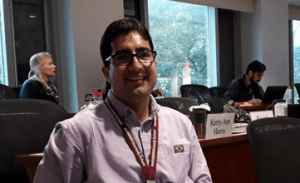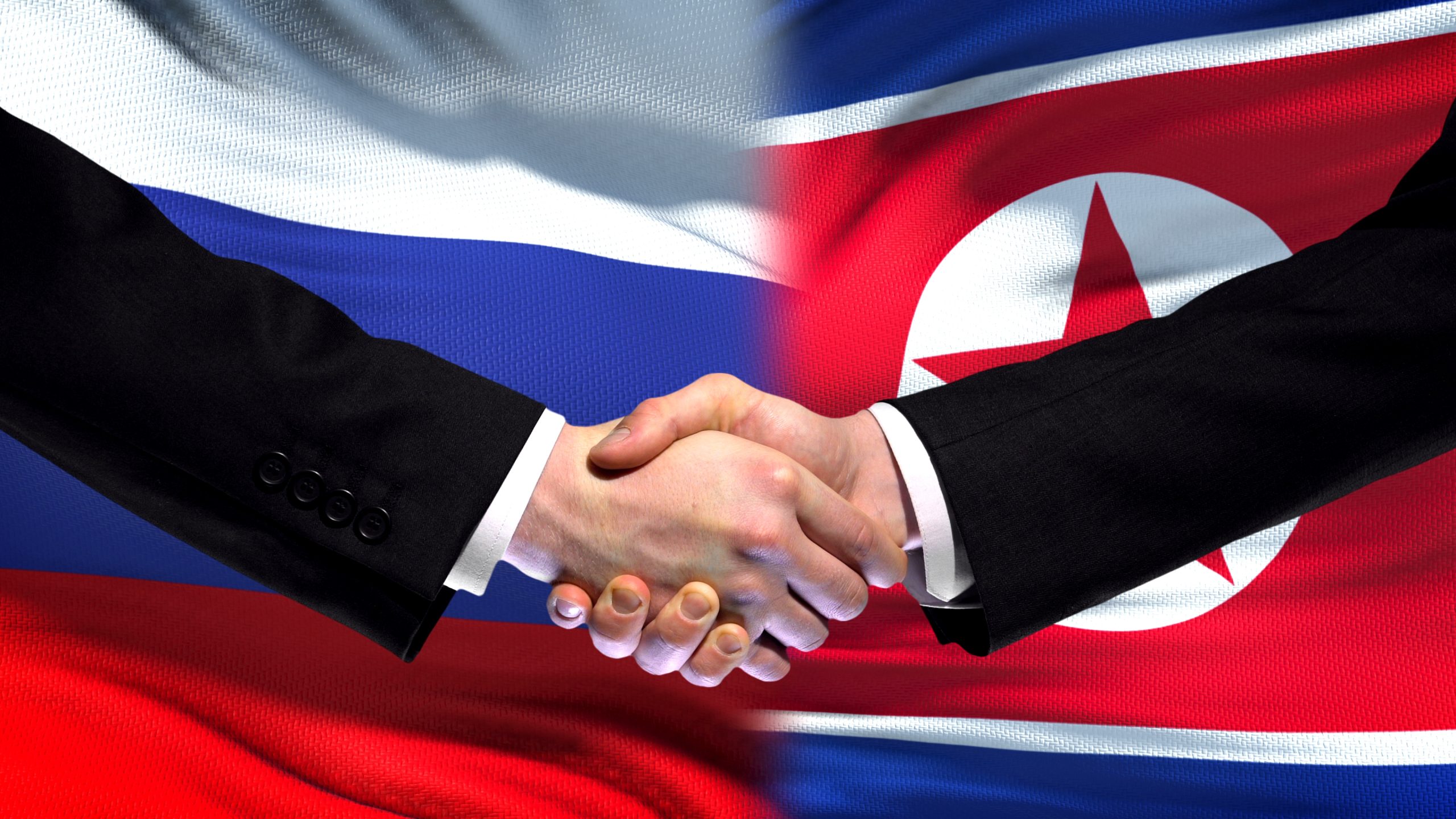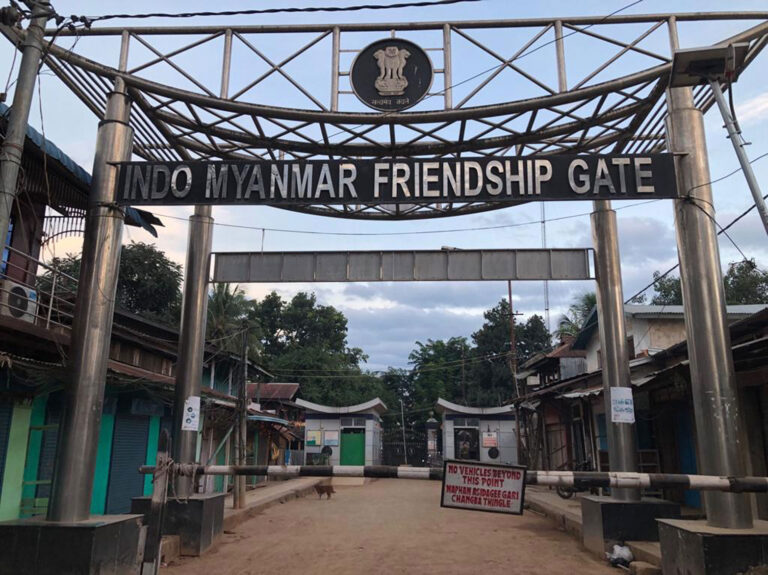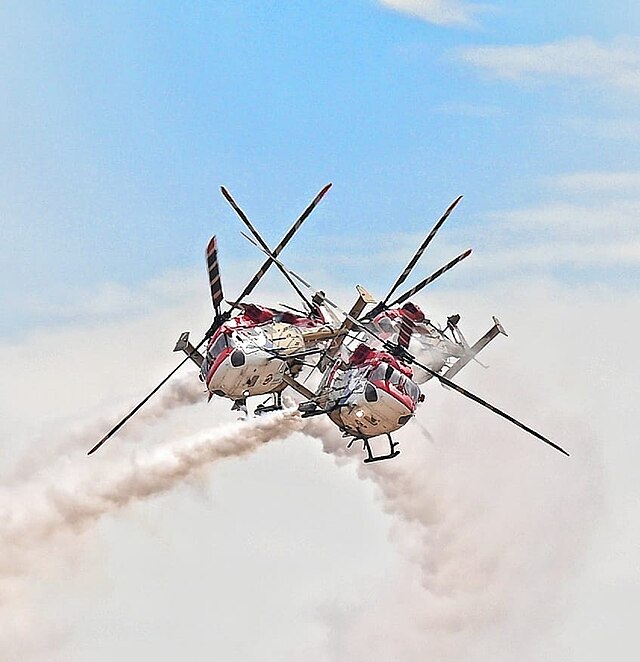
Kashmir – A Preferable Future
Fri, 26 Mar 2021 | Reading Time: 12 minutes

For last three decades, I have had a unique opportunity of observing Kashmir from three different vantage points; first as a civilian bystander, then as a civil servant, and more recently as a dissident. I must admit at the outset that for understanding a complex place like Kashmir one life isn’t enough.
But despite these complexities and the concomitant, natural cynicism, there has always been a way forward or rather ‘ways’ forward, in Kashmir. Whether that path or those paths were taken or not, and why not, that is a different question.
Two years since the abrogation of Article 370 of the Constitution, Kashmir is noiselessly reconciling with emerging political realities. It is not an altogether unfamiliar territory, because we have the benefit of hindsight with respect to managing the aftermath of politically significant events of 1953 (Sheikh Abdullah’s dismissal), 1963-64 (Moi Muqaddas agitation), 1984 (Farooq Abdullah’s dismissal as CM), 1987 (MUF fiasco) and 2008 (Amarnath Land Row) and Kashmir tends to repeat itself to an extent.
But given the technological age that we are in, and the unique geopolitical realities of this time, the post-2019 Kashmir is witnessing an historic moment of its own. So it is important that first we have a true picture of this present moment before us as we set out to explore the opportunities and challenges ahead.
One must also be conscious of the fact that after the developments, as far-reaching as those of August, 5, 2019, Kashmir could be staring at many likely futures which in Norman Henchey’s scheme could be categorized into plausible, probable, possible, and preferable futures. We must be open to engaging with each one of them, and first know where we want to be so as to strategize how we want to reach there.
Two years down the line it is by and large clear now that the abrogation of Article 370 made a powerful statement about how India looks at itself and its perception of the contemporary world-order. The situation in Kashmir must be examined in the backdrop of what has been achieved so far because that sets tone for the task ahead.
Government’s action on Article 370 was firstly a geopolitical signal, a reiteration of the unconditional nature and irreversibility of J&K’s Accession to the Union of India in 1947. India made it unequivocally known that it would not hesitate from taking seemingly extraordinary steps in the region to protect and promote its national interests, even if that meant risking an asymmetric two front war in the Himalayas. Summer of 2019 was the time when India’s defensive-offence national security doctrine whose biggest proponent has been India’s NSA Ajit Doval, came of age. Gautam Chikermane calls it inauguration of India’s rise as a ‘rajasic’ nation.
Second message was more crucial domestically. The dominant political, legislative and judicial discourse on Article 370 over the years, since its incorporation in the Constitution in 1949, had become uniquely dismissive of Parliament’s sovereign jurisdiction to amend what it had enacted. The understanding in Kashmir was that Article 370 is out of Parliament’s legislative reach as were the other items under the Basic Structure doctrine. Some of us went to the extent of likening Article 370 and 35A to India’s treaty obligations with a former foreign state (J&K).
One could disagree with how far the Article 370 contributed to the persistence of terrorism in J&K. But in as far as the consolidation of a ‘special’ or separate ethno-religious identity in Kashmir, a catalyst for militant secessionism, went; the Article 370 did to an extent provide a back-up political, legal and intellectual argument for it if not the main argument. In Kashmir’s collective consciousness, the Article was a proof of difference.
By asserting the writ of the Parliament, thus, the Government ended all confusion around the present status and future disposition of the State. J&K would now be treated at par with other territories that make India. How this sovereign assertion could help the new generation of Kashmiri people to negotiate their way out of the conflict, is discussed in the later part of this article.
Third and the most significant signal related to a radical reorientation of the unionist electoral politics in J&K. With the emergence of two separate UTs of J&K and Ladakh, the existing institutional arrangements and associated insignia, some of it dating back to 1846, were annulled at once. The J&K Reorganization Act 2019 abolished the State, repealed most of the existing laws, and provided a new framework for conduct of Government’s business in the UT. It changed how the people were to be elected to public offices and added a new dimension.
Ironically, till 2019, the ‘mainstream’ political actors had never felt the need to synchronize their political rhetoric with India’s foreign policy and stated position on J&K.
Over the years since the first election in 1951, various political parties had settled along an ideological number-line in such a way that parties which sought full integration of the State were competing with parties that advocated soft-separatism. The ‘hyper-nationalist’ and the ‘anti-national’ thrived in a strange symbiotic relationship! No doubt that as a strategy for attracting people towards non-violent, democratic mainstream, ‘calibrated’ soft-separatism was an anodyne that had seemed to work for some time. But as shown by the post-2015 events, when ideological fault-lines in J&K came out in the open like never before, we realized how at a deeper level, ‘middle-zone’ politics had done more harm than good.
Political actors had forgotten that the very origins of the electoral mainstream in J&K were rooted in the need for protection of India’s core interests. In 1951 Constituent Assembly elections when Prime Minister Jawaharlal Nehru was strengthening Sheikh Mohammad Abdullah’s hands despite protestations from Pakistan, the idea was to strengthen a government in Kashmir that had popular appeal. The over-emphasis on free and fair elections and large voter-turn outs since then, at times unsuccessfully, was not only intended to deepen democracy in J&K but as much for state-building and addressing various foreign policy concerns related to Kashmir.
But over the years, Kashmir had become like the cage in Eddie Obeng’s Five Monkey Fable. The Political parties had completely forgotten why they were there in the first place. How the elite power struggles were contributing to the perpetuation of violent conflict was very much like Naazneen H. Barma’s assessment of conflicts in Afghanistan and East Timor where elites use the infrastructure and resources of the state in their power struggles. The primary goal of state-building in Kashmir suffered because the actors assigned to do so found client-politics a far more rewarding enterprise.
Rather than taking up the cause of good governance and economic development, the political mainstream had rather unknowingly walked into booby-trap of competitive separatism and failed its raison d’être. In this backdrop, the decisions of August 5, 2019 have given a new strategic north to Kashmir politics. Block Development Council Elections and the recently held District Development Council elections where massive participation of people was seen across the J&K are pointers that democratic politics is getting rejuvenated. The spotlight is back on the day to day issues of survival, education, health, unemployment, industrial development and public infrastructure, and many political leaders have openly refused to comment on the issues of India’s foreign policy. There is a growing realization that when mainstream Kashmiri leaders talk the familiar language of Kashmir being an international dispute and giving legitimacy to Pakistan as a stake-holder it reeks of hypocrisy and does more harm than good.
This rebirth of electoral politics, with a mélange of old and new actors, with full ideological clarity and commitment to the Indian Constitution, the Constitution as it stands now, and as it might be in the future, is the foundation on which new Kashmir will be built. This is particularly important because once the dynamic nature of the Parliamentary consensus is acknowledged it leaves doors wide open for any future consensus that could be more accurately reflective of the grassroots political sentiment, be that the return of statehood or a reimagined federal relationship that the Parliament may wish to implement in line with ever-relevant framework of Insaniyat (humanity), Jamhooriyat (democracy) and Kashmiriat (Kashmiri syncretism).
Elimination of the grey zone from J&K’s political palette is therefore the most heartening development that will bring a lot of respite to the lives of the people in the days to come. As noted above, the assertion by the Parliament that there is no turning back of the clock in Kashmir and that the matter has been resolved once for all, is enabling and shall continue to enable many Kashmiris of the present generation to escape the black-hole of history. From a multiplicity of illusionary choices that had powered the chaos, there are now only two choices: flourish with India or perish against it. And it need not be said that the Kashmiris have always made the right choices, be that in 1947 or 2019.
But while the fundamentals are now clear the road ahead has to be well planned to reach a future in Kashmir that is nothing like the past. Returning to Norman Henchey’s taxonomy, Possible Future is an imagined future. It is something that could happen but sounds strange. For Kashmir, it could be that like Punjab insurgency J&K would also turn the page, a fairy-tale ending of sorts. The strangeness of this scenario comes from the persistence of a sinister will across the border that India must never be allowed to live in peace.
A diametrically opposite scenario of a future shock is also a possible future but again there are strong countervailing facts on the ground to suggest that Kashmir will not be allowed to deteriorate to pre-2019 levels of violence ever again.
Plausible Futures are then futures that could happen based on the patterns that we see. It could be a massive reduction in militant recruitment, peaceful summers, revived tourist activity but with an ever hanging sword of sudden terror attacks and mass agitations like those witnessed from 2008 – 2019.
A Probable Future is one that seems evident. Given the way separatist ecosystem has come crumbling down in recent times, one could surmise that it won’t be easy for the forces across the border to redeploy their disruptive assets in the near future. The upper-hand that the government has got in dealing with Kashmir will continue to have impact for a long time unless there is a near-total reversal of the policy.
The last one is Preferable Futures. That is the future we desire, the one which is based on a clear vision of tomorrow. Preferable future must make sense to all the stakeholders. To achieve that the way forward in Kashmir has to be based on strategic thinking to accommodate all interests, interests of the political elite as well as the masses.
The difficulty here is that the accommodation can’t happen overnight. While it is a very hopeful time it is also a very sensitive time in Kashmir because the transition isn’t over yet. People of J&K have been very patient but the state will have to be impatient in delivering the promises made.
The road to a Preferable Future goes through the three-fold stated objectives of the resolution for amendment of Article 370 moved by the Home Minister in the Lok Sabha. These could be broadly categorized into political, that J&K will usher in a new regime of politics; developmental, that J&K will see fast-paced economic development, social: that West Pakistan refugees and women will be given equal rights as others and steps will be taken towards a more inclusive society. It goes without saying that the road ahead is through these objectives being achieved in a time-bound manner.
The constitution of DDC’s as third tier of grassroots governance has been a promise fulfilled. The restoration of Statehood, as and when the Center deems it appropriate, and the further revival of the democratic process will widen the space for internal dialogue. Well-meaning, progressive voices that are ready to look ahead and see the changed circumstances as opportunity and not as adversity will automatically come forward to strengthen this process.
Veteran economist and former Finance Minister of J&K Haseeb Drabu calls Kashmir an export-oriented, import-dependent economy. He believes that J&K could become a model for sustainable economies of tomorrow, a ‘cultural economy’ driven by unique craft sector. This is important from a preferable-future perspective also because Kashmir’s artisanal economy is the one most impactful at the grassroots level. Its revival, more so during the times of Pandemic can bring great dividend to the region experiencing a prolonged lock-down preceding the COVID-19 restrictions.
J&K has around two thirds of population less than 35 years of age and at 16.2%, it has one of the worst unemployment rates in the country. While launching a USD 4 Billion industrial scheme for J&K, the LG J&K Manoj Sinha said recently that it would bring in new investments and create 45000 employment opportunities. With land grant laws made more investor-friendly, regulations on and establishment of new industrial units relaxed, J&K has the potential to take a big leap forward on manufacturing, agriculture and food processing sector, and horticulture. Completion of Srinagar Jammu National Highway and Railway Line can link J&K to markets across the country and create employment opportunities for the people. But all this requires implementation machinery that is fully geared to take up the challenge in national interest. Extraordinary times call for extraordinary remedies and the time is the most crucial factor here.
There are many interventions in services sector that need to be done to bring some fresh air into Kashmir. Tourism is both a generator and beneficiary of peace. Sri Lanka is the most recent example of tourism transforming a conflict zone.
For a place like Kashmir that has for long remained under the dark-veil of insurgency, the biggest set-back has been to its multi-cultural, urban ethos. In a recent path-breaking article on invisible warfare, veteran strategic expert Gen Ata Hasnain pointed out how spread of toxic ideologies in Kashmir, as part of invisible warfare, was aimed at sustaining the terrorism. These ideologies worked by privileging a regressive world-view in which all past was ‘jahilia’ or dark-age and all future was ‘Jihad’ or holy-war.
Not surprisingly in past thirty years Kashmir became an ever-convulsing necropolis where every life-enhancing activity was disallowed. Organizing a major literature festival or a concert or even shooting for Hindi films had become out of question. Well before rest of the world was introduced to cancel-culture, in 2011 Kashmir’s first ever international literary festival was cancelled because Kashmir must not experience ‘normalcy’. In the summer of 2013 when Zubin Mehta led Bavarian State Orchestra performed at Shalimar Gardens on the banks of Dal Lake, a wide-spread campaign was run to disrupt it.
Separatists, cultural conservatives and religious clergy have been on the same page about the need to keep cinemas shut, and disallow modern tourism facilities like bars, spas, and night-clubs in Kashmir. Ironically this was and still continues to be so despite knowing that Kashmiri people throng to multiplexes the moment they cross the Banihal tunnel.
It need not be reiterated that if J&K has to come up as a world-class tourist destination then the facilities have to be world-class as well. I find the argument of local cultural sensitivities dubious seeing how well Istanbul, Bali, Dubai, Beirut and Cairo have maintained their cosmopolitan nature, catered to the tastes of visitors, while at the same time retaining the local culture and leaving enough space for the faithful.
Today it is hard for someone from my generation to even believe that Hotel Lalit in Srinagar had a vibrant discotheque once or that in Polo View in the heart of Srinagar, a rocking night-club Capri used to be a very popular hang-out for locals in 1980’s. Broadway cinema had a cinema and bar. Pahalgam had a disco and bar. Lal Chowk in Srinagar and almost all major towns across Kashmir had very busy cinemas. Cinema had done tremendous good as a medium of social change and for development of a tolerant, urban culture in Kashmir.
The Government must realize that this is an opportune moment to implement wide-ranging reforms in tourism sector and revive an age when Jammu and Kashmir welcomed national and international tourists in great numbers. No other sector holds as much promise for peace building as tourism.
The supply side management of violent extremism is another important action point. It is important to look at the connection between militancy and a culture. In an important article in The Round Table, Chrissie Steenkamp argues that prolonged conflict gives rise to a ‘culture of violence’ by creating a socially permissive environment for the violence to continue.
One of the important ways by which militancy got normalized in Kashmir was through a historical and cultural argument that portrayed Kashmir as an exotic, non-Indic culture. One of the ways to do that was by rejecting the ‘pacifist’ Indian way of life, for a ‘rebel’ way of life. Those who see 1987 as the turning point forget how in the two preceding decades, 1970’s and 80’s Kashmir saw dismantling of its traditional religious and cultural edifice as an extension of Zia ul Haque’s program to turn Pakistan into a front-line state of Islamic revivalism. This was the reason that Kashmiris who were known to be scared of slaughtering chicken suddenly woke up to the thrill of beheading fellow Kashmiris once the militancy erupted in 1990.
Five thousand years of civilizational-relationship between Kashmir and India was erased by a narrow reading of history where time began in year 1586 when Mughal’s annexed Kashmir. A unique socialization process that was promoted by educational institutions, civil society groups, academic community, literary and the religious organizations ensured that Kashmir’s saw themselves as ‘racially’ different, an apple-cheeked, long-nosed and blue-eyed race that spoke a foreign-sounding language and had nothing ‘Indian’ about them. That was the ethnic part. By mobilizing the majority religion, ethnic struggles became ethno-religious struggles ending in migration of Kashmiri Pandits and inauguration of Kashmir as the inferno that it became.
This socialization process which bred parochialism and disaffection in Kashmir must be interrupted. In recent times Government has made various educational interventions and many more are in the pipeline to nudge people away from heightened ethno-religious consciousness to more inclusive identities in Kashmir. The New Education Policy 2020 talks about Global Citizenship Education and there is a lot of potential for working on promotion of super-ordinate and supra-ethnic identities. World-over it has been an effective mechanism for peace-building. Kashmiri identity was in itself a super-ordinate identity above the religious identity of Muslim, Hindu and Sikh but over the years it has become undermined and identity politics has exacerbated the ethnic and religious fault-lines. The intention should not be to go back to an imaginary point in the past, but rather look for a future that is better than the past and where every ethnic, religious and linguistic community in J&K feels accommodated, another major requirement for a Preferable Future.
To summarize, the way forward in Kashmir consists in first analyzing the present moment in Kashmir with respect to what Donald Rumsfeld called known-knowns, known-unknowns, unknown-knowns and unknown-unknowns. There are many things about Kashmir that the policy-makers neither know nor do they know that they don’t know. Kashmir policy will have to derive its heuristics from the best practices across the world to overcome its blind-spots.
Second step is then to be realistic about the future that we wish to achieve and have a clear-cut vision about it.
Finally, we have to mobilize our resources to achieve that future in a time bound manner.
Given the political and bureaucratic will, it is very much possible to see Jammu & Kashmir transforming into a politically stable, economically vibrant, socially inclusive and culturally progressive region of India in foreseeable future.

Shah Faesal has served as an IAS Officer in Jammu and Kashmir. He holds a masters degree in Public Administration and Public Policy Management from Harvard University.
Twitter: @shahfaesal
Email: i.shahfaesal@gmail.com
Disclaimer
The opinions expressed in this article are the author’s own and do not reflect the views of Chanakya Forum. All information provided in this article including timeliness, completeness, accuracy, suitability or validity of information referenced therein, is the sole responsibility of the author. www.chanakyaforum.com does not assume any responsibility for the same.
Chanakya Forum is now on . Click here to join our channel (@ChanakyaForum) and stay updated with the latest headlines and articles.
Important
We work round the clock to bring you the finest articles and updates from around the world. There is a team that works tirelessly to ensure that you have a seamless reading experience. But all this costs money. Please support us so that we keep doing what we do best. Happy Reading
Support Us




















POST COMMENTS (23)
Anurag tiwari
curso de marketing
Saksham Aggarwal
Vikrant
Naresh Jain
Neeru
pawan
swamy
Lalit Anjum Kher
Rohit Raj
Mateen
SAQIB NAWAZ
Vijay Wadhwani
Rizwan
Zahoor Ahmad Mir
Irrrfan Khan
Amitabh Jha
Khursheed Ahmad
Major (Dr)Pradeep Menon (Veteran)
Ninad
Vinod Bhatia
Rajesh
Vikram Kath